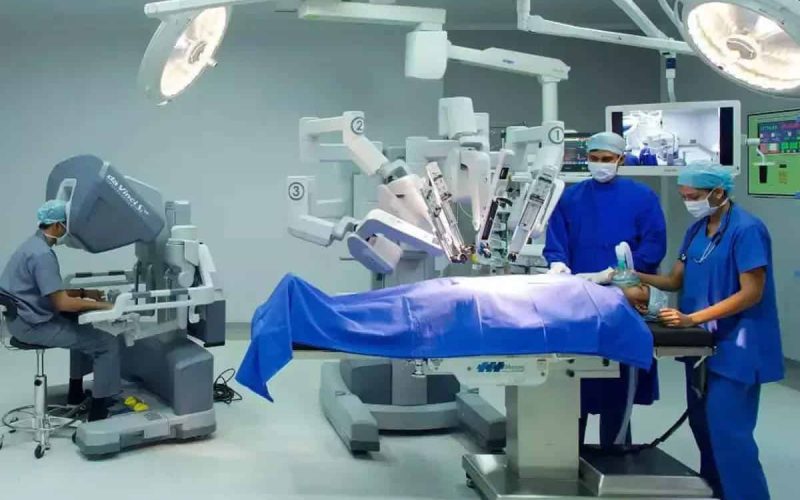The landscape of medical procedures is continually evolving, bringing transformative advancements that enhance patient care and expedite recovery times. Traditionally, surgical techniques have been associated with prolonged recovery periods, pain, and complications. However, innovations in surgical methodology, the adoption of advanced technologies, and a focus on minimally invasive techniques are reshaping this paradigm. Today, more patients are able to undergo procedures that allow for quicker recovery with less risk of complications, helping them return to their lives sooner and with less discomfort.
Minimally Invasive Surgery: A Game Changer
Minimally invasive surgery (MIS) is revolutionizing surgical practices across various specialties. Unlike traditional open surgery, which requires large incisions, MIS utilizes smaller incisions and specialized instruments to achieve the desired results. This technique significantly reduces tissue damage and post-operative pain, leading to faster recoveries. Statistics show that patients who undergo minimally invasive procedures experience reduced hospital stays—often cut by half compared to conventional methods. Hospitals and surgeons are increasingly prioritizing minimally invasive options, as these methods not only reduce the risk of infection but also minimize blood loss and trauma. The impressive outcomes associated with MIS are drawing more patients toward these procedures, making it essential for patients to discuss available options with their healthcare providers.
Tech Innovations Shaping Surgical Recovery
Technological advancements play a pivotal role in improving surgical outcomes and recovery times. Robotics, for instance, has made its mark in the operating room. Robotic-assisted surgeries enhance precision, allowing surgeons to perform delicate operations with improved dexterity. This technology is particularly beneficial in orthopedic and urological procedures. Research indicates that robotic surgeries can lead to shorter recovery times, less pain, and fewer complications, appealing to both surgeons and patients alike. Additionally, imaging technologies such as intraoperative CT scans and MRIs offer surgeons a clearer picture, aiding in decision-making during procedures. These advancements combined with robotic technologies further optimize surgical interventions, enhancing the safety and efficiency of operations.
Enhanced Post-Operative Care Techniques
Post-operative recovery is equally crucial in achieving positive surgical outcomes. The implementation of enhanced recovery after surgery (ERAS) protocols exemplifies the commitment to improving post-operative care. These evidence-based protocols encompass every phase of the patient’s surgical journey, from pre-operative education to post-operative recovery strategies. The influence of ERAS has notably reduced hospital stays and improved patient satisfaction. Patients engaged in their recovery are more likely to adhere to their rehabilitation processes, which dramatically impacts their healing process. Moreover, techniques such as multimodal analgesia, which employs various forms of pain management rather than relying solely on opioids, have proven to be instrumental. This approach reduces the chances of opioid-related side effects while still effectively managing pain, allowing patients to regain mobility and independence quickly.
The Role of Qualified Surgeons in Minimally Invasive Techniques
The execution of cutting-edge procedures largely depends on the skills and expertise of the surgeons involved. Involving experienced and well-trained professionals can enhance patient trust and outcomes substantially. Experts are renowed for their proficiency in minimally invasive techniques like microdiscectomy, explains Dr Michael R Wheeler, MD, which exemplifies the marriage of skill and advanced procedures aimed at faster recovery. Patients benefit immensely when treated by specialists who stay abreast of the latest surgical innovations, ensuring that they receive optimal care tailored to their needs. The emphasis on surgeon expertise underlines the importance of extensive training and continued education in modern surgical practices. Connecting with hospitals that prioritize the training of their personnel fosters an environment where cutting-edge techniques can thrive.
Patient Education and Involvement
Foremost in promoting faster recovery is active patient engagement. Education about pre-and post-operative care practices empowers patients to take control of their health. Understanding recovery protocols and the importance of adherence significantly influences outcomes. Patients informed about their procedures are more likely to comply with health recommendations, enhancing their recovery experience. Moreover, leveraging technology through applications and online resources helps patients track their recovery and adhere to prescribed exercises or medications post-surgery. Encouraging open communication between healthcare providers and patients further ensures that concerns are addressed promptly, allowing adjustments to be made when necessary to enhance recovery.
Future Directions in Surgical Procedures
As medical science continues to advance, future surgical procedures will likely become even less invasive. Innovations such as nanotechnology hold promise in altering surgical methodologies, creating possibilities for procedures that are not only minimally invasive in the traditional sense but may also eliminate some surgeries altogether. For instance, regenerative medicine may offer alternatives for certain conditions, managing issues at the cellular level without the need for surgical intervention. Continuous research and development in surgical technology and methodologies will likely lead to significant shifts in how surgeries are performed, ultimately promoting faster recoveries and safer procedures. At the forefront of these changes will be a commitment to patient-centered care that emphasizes safety and recovery as primary objectives.
Exploring cutting-edge procedures is integral to providing patients with optimal surgical experiences that cater to their needs. The evolution of minimally invasive techniques, technological innovations, comprehensive post-operative care, and patient engagement play tumultuous roles in expediting recovery. As the field continues to progress, the partnership between skilled surgeons, innovative technologies, and informed patients will pave the path for even safer, faster recovery methods moving forward.































